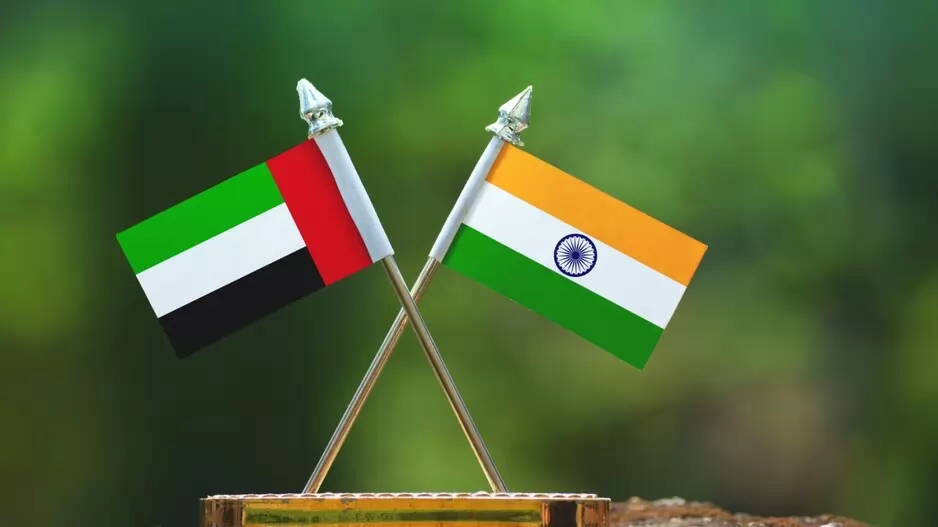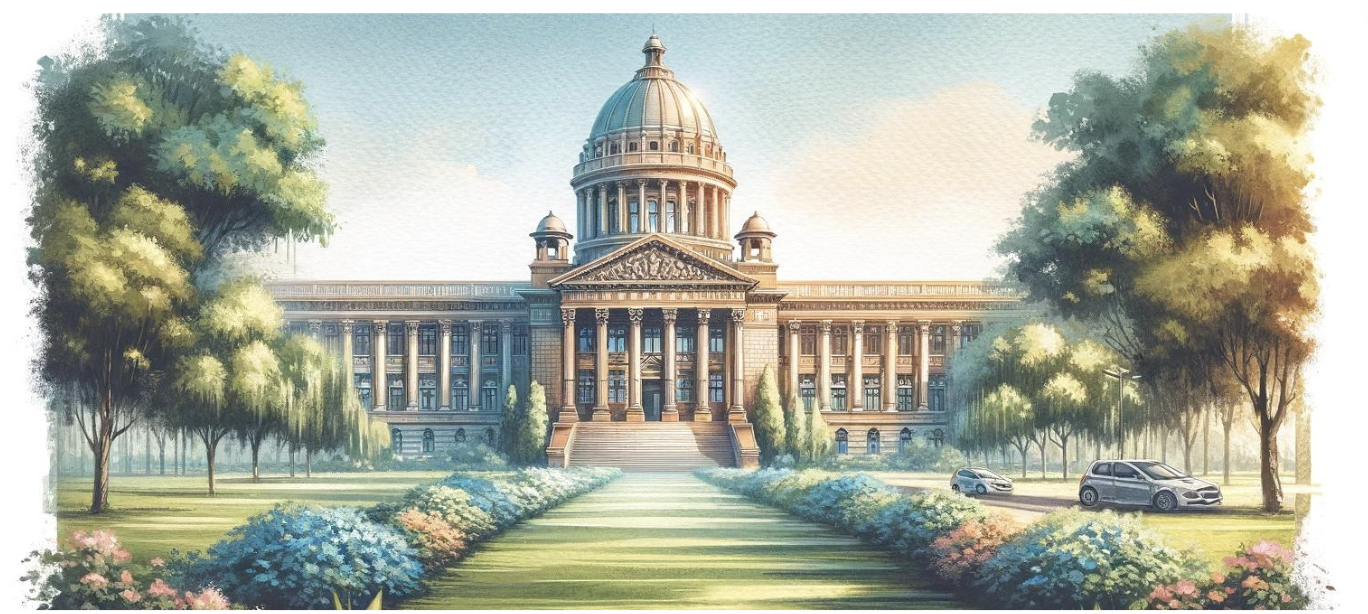
India’s relationship with the UAE has indeed undergone a significant transformation, evolving into one of its most crucial bilateral partnerships. The UAE serves not only as a strategic ally but also as a key player in India’s engagement in the Gulf region, showcasing the strong rapport between the leadership of both nations.
The Prime Minister’s upcoming visit to the UAE in February 2024 carries substantial significance, particularly with the inauguration of a temple constructed by the Bochasanwasi Shri Akshar Purushottam Swaminarayan Sanstha in Abu Dhabi. This event marks the Prime Minister’s seventh visit to the UAE since 2015, underscoring the deepening ties and mutual cooperation between India and the UAE.
Bilateral Relations between India and the UAE
Establishment of Diplomatic Relations (1972)
- Diplomatic ties between India and the UAE were established in 1972.
Strategic Partnership
- In August 2015, the visit of India’s Prime Minister to the UAE initiated a new strategic partnership.
- This was further solidified during the visit of the Crown Prince of Abu Dhabi to India in January 2017, elevating bilateral relations to a comprehensive strategic partnership.
Economic Relations
- Bilateral trade reached USD 85 billion in 2022-23, with the UAE being India’s third-largest trading partner and second-largest export destination.
- The aim is to increase bilateral merchandise trade to above USD 100 billion and services trade to USD 15 billion within five years.
- The UAE is the ninth biggest investor in India, with investments estimated at around USD 11.67 billion.
- Indian companies have set up manufacturing units and invested in various sectors in the UAE.
FTA Negotiations
- Both countries are prioritizing negotiations for an India-UAE comprehensive economic partnership agreement.
- India aims to establish an Interim Trade Agreement with the UAE among other countries.
Cultural Relations
- Over 3.3 million Indians reside in the UAE, and the Emirati community is receptive to Indian culture.
- India has been the Guest of Honour Country at events like the Abu Dhabi International Book Fair.
- Indian cinema, TV, and radio channels are popular in the UAE.
Fintech Collaboration
- India and the UAE are collaborating in the fintech sector, with initiatives like the acceptance of RuPay card in the UAE and the Rupee-Dirham settlement system.
- The LCSS aims to enable invoicing and payment in domestic currencies, fostering an INR-AED foreign exchange market.
Energy Security Cooperation
- The UAE is crucial for India’s energy security, with strategic oil reserves stored in India and agreements for investment in oil storage facilities.
Strategic Regional Engagement
- Both countries actively participate in regional groupings and initiatives like I2U2 and IMEC, reflecting shared interests and strategic alignment.
India-UAE Relations: Key Challenges
Trade Barriers Impacting Indian Exports:
- Non-Tariff Barriers (NTBs) like Sanitary and Phytosanitary (SPS) measures and Technical Barriers to Trade (TBT) hinder Indian exports, notably in sectors such as poultry, meat, and processed foods.
- Mandatory Halal certification acts as a significant barrier, leading to a nearly 30% decline in processed food exports to the UAE in recent years.
- India’s Ministry of Commerce and Industry reports the substantial impact of these barriers on trade.
Chinese Economic Influence in the UAE:
- China’s “Cheque Book Diplomacy” has outshone Indian economic efforts in the UAE and the wider Middle East, with investments and contracts exceeding USD 30 billion between 2005 and 2020.
- The American Enterprise Institute’s China Global Investment Tracker highlights China’s dominance in investment in the region, posing a challenge to India’s economic presence.
Challenges of the Kafala System:
- The Kafala system in the UAE grants employers significant control over immigrant laborers, raising human rights concerns.
- Instances of passport confiscation, delayed wages, and poor living conditions highlight the difficulties faced by migrant workers under this system.
Concerns Over UAE’s Financial Support to Pakistan:
- The UAE’s substantial financial aid to Pakistan raises apprehensions about potential misuse, given Pakistan’s history of supporting cross-border terrorism against India.
- In 2019, the UAE pledged USD 3 billion to boost Pakistan’s foreign exchange reserves, sparking concerns about diversion towards activities harmful to India’s national security.
Diplomatic Balancing Act Amid Regional Conflicts:
- India faces a diplomatic challenge in balancing relations with both Iran and Arab nations, notably the UAE, amidst conflicts in the region.
- Despite U.S. sanctions on Iran, India continued to import oil, highlighting the complexities in its diplomatic maneuvers.
- The recent conflict between Israel and Hamas further complicates India’s diplomatic efforts, affecting proposed initiatives like the Indo-Middle East Corridor (IMEC).
Steps to Enhance Relations with the GCC
Leveraging Existing Agreements:
- UAE’s involvement in various regional and bilateral Free Trade Agreements (FTAs), notably with GCC countries, presents a promising opportunity for India.
- The UAE shares strong economic ties with Saudi Arabia, Kuwait, Bahrain, and Oman, and benefits from a common market and customs union with these nations.
- Through agreements like the Greater Arab Free Trade Area (GAFTA), the UAE enjoys free trade access to several countries, facilitating potential trade partnerships for India in various sectors such as handlooms, handicrafts, textiles, and pharmaceuticals.
Addressing Non-Tariff Barriers (NTBs):
- The UAE’s tariff structure, bound by GCC agreements with an average tariff rate of 5%, presents challenges due to Non-Tariff Barriers (NTBs).
- Enhancing transparency and predictability in NTB usage is crucial for Indian exporters to comply with UAE regulations.
- Regular updates and information exchange on labeling requirements, licensing protocols, permits, and import monitoring can streamline trade relations, particularly in sectors affected by NTBs.
Exploration of 2+2 Dialogues:
- Similar to India’s high-level dialogues with other nations, initiating a 2+2 dialogue with the UAE can foster deeper cooperation on strategic, defense, and political fronts.
- Such dialogues can promote mutual understanding and cooperation, enhancing bilateral relations between India and the UAE.
Alignment with UAE’s ‘Vision 2021’:
- India can align its economic interests with the UAE’s Vision 2021, which aims to diversify the economy and reduce dependence on oil.
- Collaboration in sectors such as renewable energy, technology startups, fintech, and emerging industries can strengthen economic ties between the two nations, supporting the UAE’s vision for economic transformation.
Advocating for Labor Reforms:
- Diplomatic engagement with the UAE is essential to advocate for reforms in the Kafala labor system, similar to efforts in Qatar influenced by Indian advocacy.
- India has the potential to influence positive changes in the welfare of migrant workers in the UAE, contributing to improved labor conditions and human rights.
Conclusion
The relationship between India and the UAE is like a colorful tapestry, woven with threads of strategic depth, economic interdependence, and vibrant cultural exchanges. For UPSC aspirants, grasping the complexities of such international partnerships is vital. These ties go beyond mere diplomacy; they shape the economic and strategic landscapes globally. The recent visit of the Prime Minister to the UAE goes beyond symbolism. It showcases India’s adeptness in maneuvering through intricate global scenarios. This relationship, built on mutual respect and common objectives, serves as a model for future diplomatic endeavors. As aspiring civil servants, comprehending the intricacies of such ties is paramount. It will guide India’s role on the world stage, ensuring a balance between strategic interests, economic benefits, and cultural diplomacy.

